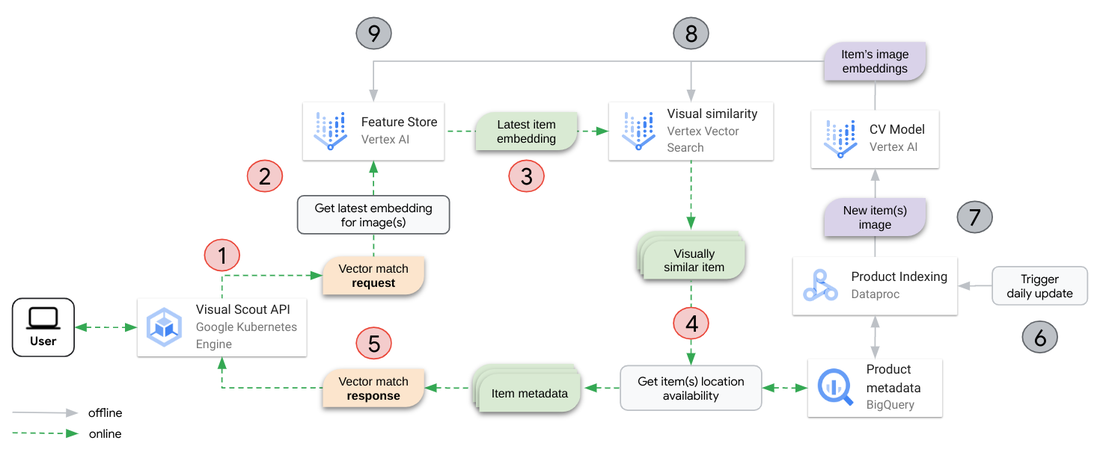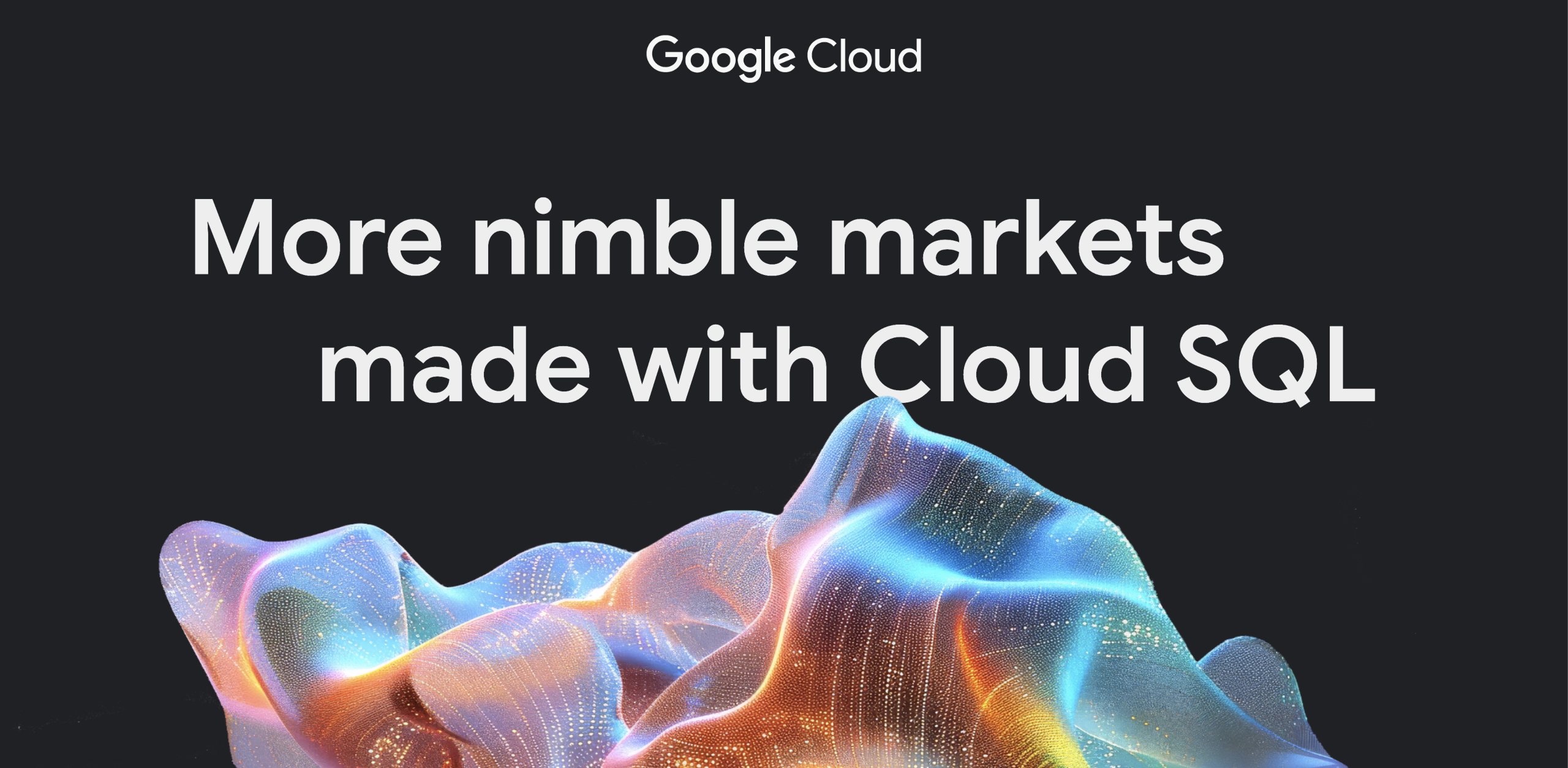
Welcome to the April 16–31, 2025 edition of Google Cloud Platform Technology Nuggets. The nuggets are also available in the form of a Podcast.
A quick reminder that Google Cloud Next ’25 recorded sessions are available on demand.
The MCP Toolbox for Databases (formerly known as GenAI Toolbox for Databases) is seeing increasing support for additional data sources, Integration with Agent Development Kit (ADK) and LangGraph support for creating resilient, stateful agents with persistent storage in Google Cloud databases like AlloyDB and Cloud SQL. Check out the blog post that provides information on various resources to begin building and deploying these agentic applications that make use of these services.
Check out a new DORA report titled “Impact of Generative AI on Software Development”. The report is interesting in the scope that it looks at both personal and organization benefits that are happening due to adoption of Generative AI. It also throws up a real world fact that despite these benefits, there is a certain amount of regression that is happening for organizations when it comes to software delivery. Do read up this report and go over specific that help maximise the benefits of AI integration.
Code Assist is no longer just a AI assistant in the editor that provides code suggestions and completions. Enter Code Assist Tools, that let developers connect to external services without leaving the IDE in order to get tasks, summarize design documents and more tasks across various stages of the Software Development Lifecycle (SDLC). One of the tools integrates with Google Docs, allows you to extract information directly from Google Docs and help you with that information. For e.g. you could ask it to reference a Google Doc, that contains product requirements and then use those requirements to generate a code project structure, generate code and help you prototype the application. All this, while you are in the IDE itself and as they say, no context switching between tools (remain in the flow).
Check out the blog post that provides example prompts of how you can do that.
Ever had a product visualized in your mind that you wanted but are not sure about the exact product name, etc. Lowe’s addressed that challenge head-on with Visual Scout, an interactive way to explore the product catalog and quickly find products of interest on lowes.com. Once you have zoomed into a product, it shows similar products that you can quickly filter down via likes and dislikes to arrive at a specific product. The Technology behind this uses several Google Cloud services as shown below. Check out the blog post for the details.
In another interesting customer use case, CodeRabbit, an AI code review tool, is leveraging Google Cloud Run to cut code review time and bugs in half by safely and efficiently executing untrusted code. The service doubles down on code reviews with suggestions that also analyze the impact of those changes. Check out the blog post for details and the architecture behind this service.
Security Operation Centers have usually used technology in an assistive manner. Google Cloud is making moves towards a more agentic approach to Security operations, where the agents are able to take several independent decisions and work actively as defined. In this blog post, Google provides a vision of how they see this happening and the availability of specific security agents being developed by Google, such as an alert triage agent and a malware analysis agent. Key in this post, is also the open-sourcing of MCP servers for Google Unified Security, allowing users to build custom security workflows that use both Google Cloud and ecosystem tools.
Here is a summary paragraph for each of the three sources you provided, highlighting what each post is about, their key advantages and benefits, and a brief description of the technology discussed.
BigQuery DataFrames Python library is an open-source Python library that uses common Python data science APIs, transpiles them to BigQuery SQL operators and, in version 2.0, introduces a unified dataframe to handle multimodal data, powered by BigQuery’s underlying capabilities. The new version updates definitely pack a punch in handling both structured and unstructured data together to meet Generative AI application needs. Check out the blog post for more details.
Keep a close watch on the BigQuery data engineering agent. The goal of the agent is to automate and simplify data pipeline engineering within BigQuery. For example, the agent can build and modify pipelines autonomously using natural language instructions, proactively identify and propose fixes for issues like data drift, and support the bulk drafting of pipelines for scaling across different use cases or departments. Check out the blog post for more details. The agent is not yet available but the blog post has a link where you can signup your interest.
BigQuery data canvas, lets you find, transform, query, and visualize data by using natural language prompts and a graphic interface for analysis workflows. Google Cloud Next 25 saw the introduction of a built-in AI-assistive chat experience in data canvas powered by Gemini. Check out the blog post that does a deep dive into the new features and also real world use cases of how you can use this in specific domains.
Specifically speaking more about AI Assistance, there are significant enhancements to Looker with Gemini infusion. Check out this blog post that highlights conversational analytics, automatic slide generation and other features that are now happening with the intersection of Gemini and Looker. The post also goes into upcoming features on the roadmap.
Google was named a Leader in The Forrester Wave™: Data Management for Analytics Platforms, Q2 2025 report. In the report, Google received 5 out of 5, the highest score possible, across 13 different criteria. Read the full Forrester Wave™: Data Management For Analytics Platforms, Q2 2025 report here and the blog post.
Looking to migrate migrating database workloads from MySQL to Google Cloud’s Spanner? Spanner’s Migration Tools and enhanced relational capabilities plan to make this easier. Among tools, you have:
- It automates schema and data migration and supports live cutovers
- Improved data movement templates with increased throughput at a lower
- A built-in reverse replication that synchronises data back from Spanner to sharded MySQL instances, allowing for near real-time failover in a disaster scenario.
Spanner now includes a rich set of relational capabilities that closely map to MySQL, thereby reducing the complexity of migration. These include 10s of new MySQL functions, new Autoincrement keys and more. Check out the blog post for more details.
If you are looking to integrate Google Cloud databases with your Langchain applications, there is now support for multiple languages other than just Python. Go, JavaScript and Java languages are now supported in this integration. Check out the blog post that provides links to various developer resources and code snippets across the newly supported languages.
Google Cloud Spanner has been recognized by Gartner in the Critical Capabilities for Cloud Database Management Systems for Operational Use Cases report, where it was ranked #1 in the Lightweight Transactions Use Case and was ranked #3 in the OLTP Transactions Use Case and the Application State Management Use Case. Read the Gartner report and the blog post.
Google is making significant architectural changes to its global network to support the demands of the AI era. This next generation of Google’s global network focuses upon four key architectural principles: exponential scalability, beyond-9s reliability, intent-driven programmability, and autonomous networking. As an example, consider the beyond-9s reliability. and one of the unique techniques there being implented is Protective ReRoute, which shifts the responsibility of handling path anomalies from just routers to the hosts (the devices sending data) The hosts intelligently detect network path issues and can promptly and automatically reroute traffic to a healthy, alternative path, which might be in the same or a different part of the network. Check out the blog post for innovations in each of the above principles.
If you would like to share your Google Cloud expertise with your fellow practitioners, consider becoming an author for Google Cloud Medium publication. Reach out to me via comments and/or fill out this form and I’ll be happy to add you as a writer.
Have questions, comments, or other feedback on this newsletter? Please send Feedback.
If any of your peers are interested in receiving this newsletter, send them the Subscribe link.
Source Credit: https://medium.com/google-cloud/google-cloud-platform-technology-nuggets-april-16-30-2025-a11b12378ddb?source=rss—-e52cf94d98af—4



